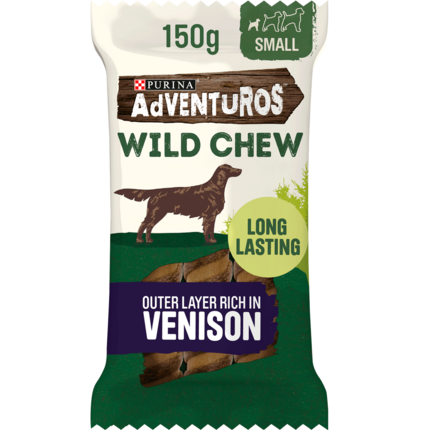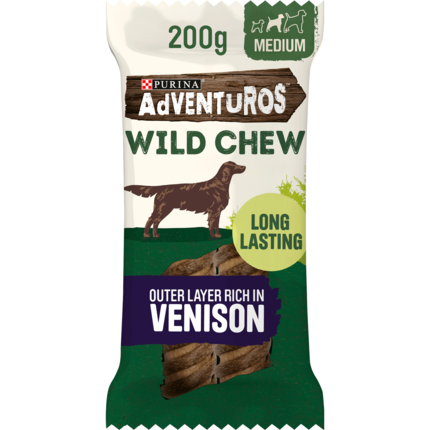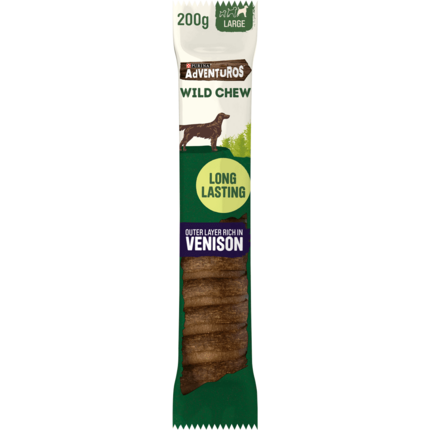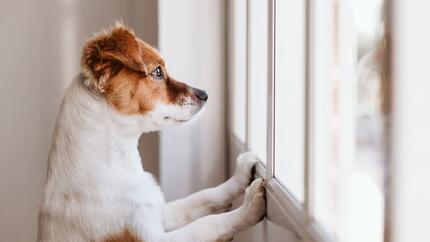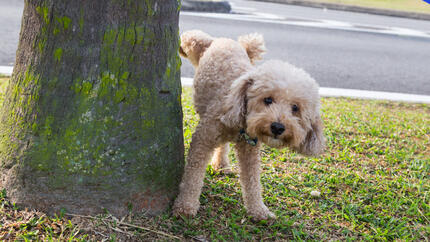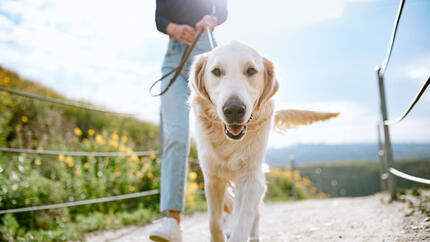
Just like us humans, dogs need enough space in their home to feel happy and comfortable. But not all dogs and not all owners - are the same, making the question ‘how much space does a dog need?’ quite difficult to answer.
And some dogs are smaller than others so, while a Pug can live happily in an apartment with surrounding outdoor space, a Golden Retriever will enjoy a proper back garden. There are a few insights into a dog’s needs that will help you navigate the ‘pet – living space’ conundrum easily.
Keep reading to find out how much space a dog will need both indoors and outdoors.
How much space does a dog need?
One of the biggest things to consider when adding a new dog to the family is the environment in which you live, the surroundings and the space you have. Whether you live in an apartment or in a house with an impressive backyard, there are plenty of pups that would love to call these places home. It’s just a matter of finding the perfect match for you. How much space a dog needs will depend on their size, breed, age, and energy level – and how often you are able to take your dog out into the great outdoors. Some active dogs can live in a surprisingly small home, if they can get out into the open countryside daily and have plenty of free running exercise.
Breed types and sizes
Although dog breeds are well-known for having certain characteristics, each individual from a breed will vary. That being said, due to their size and temperament, many small dog breeds can cope well in urban settings, so if you’ve got an apartment with access to outdoor green space, many small dogs will feel happy and comfortable with this arrangement.
However, do watch out for those tiny companions with big personalities as their space requirements might be more demanding than even some large dog breeds and they can find life in an urban environment challenging. As an example, many of the terrier breeds might be small, but they are still very active, as both breeds were originally bred for doing a job (mostly vermin killing). Although these dogs can cope well in smaller houses, they’ll enjoy a garden to play, dig and have fun in. They also need access to the great outdoors so they can get the exercise they need.
Bigger dog breeds ideally need a large garden so you can play and train, and to burn off some energy but also a sturdy fence too to avoid any escapes! The Siberian Husky as an example might not be a giant but is an expert escapologist!
Most importantly however for these larger or more active breeds, is that they have daily access to the open countryside and plenty of owner interaction. If you can get them outside with free-running opportunities for several hours a day every day, plus put in the training and breed appropriate activities that keep them healthy and happy (or better still, a job to do), and give them all the enrichment that they need, they can live in a smaller dwelling and not need a huge outdoor space.
Energy levels and enrichment
Smaller dog breeds are generally able to cope better with living in an apartment and big dogs often thrive with large garden spaces. But you will be surprised to find out there are exceptions to this common-sense rule. Tiny breeds with a lot of energy might enjoy their outdoor space more than some giant pups who are less active.
The joy of a garden is that you can use it to give your dog plenty of safe breed appropriate enrichment opportunities, have somewhere to play games, and have a distraction-free training venue! And for this, ideally, the bigger your dog, the bigger the garden! If you plan to set up a practice agility course for example, that takes a bit of space. Or if you have a terrier and you want to build them a digging pit or set out a scent trail for your nose-driven pup, or just want room to play active games.
It is important to remember though that dogs rarely play on their own. It doesn’t matter how big your garden is, if you don’t get out in it with your dog. Having a big garden isn’t an excuse for not interacting with your dog. It’s less about the space and far more about what you do in it!
How much space do different dog breeds need?
Although size and energy levels are good parameters to keep in mind when choosing which dog to welcome home, they’re not perfect guides. Every pup is unique. But if you’ve got a particular breed in mind, here are the space requirements for some of the most popular dogs out there.
How much space does a German Shepherd need?
A home with a secure, medium to large-sized garden is the ideal setup for a German Shepherd so as to give you space for training and play but more importantly country life is a much better fit than urban chaos for this smart, large dog breed who can often get overstimulated, reactive and stressed with the constant bombardment of stimuli from city life. You can use a garden to set up plenty of enrichment opportunities in a garden space as well as them having plenty of nooks and crannies to explore. They do however need daily country walks and off-lead running as well as training and owner interaction.
How much space does a Golden Retriever or Labrador Retriever need?
The beloved Golden Retriever and Labrador Retriever breeds are two more rural, country-loving breeds, at their happiest exploring the countryside with their person, playing retrieve games (or even pet gundog classes) and jumping in muddy puddles! If you’ve got a medium to large-sized garden, they’ll be even happier – as they enjoy being outdoors with their family – even if just relaxing. Due to their high exercise requirements, these breeds will need regular long walks and plenty of outdoor activities as they need to keep busy. Again, these breeds are not suitable for owners who live in an apartment (unless that apartment is on a farm!) – and their home has to be large enough that they aren’t going to be constantly sweeping things off tables with their ever-wagging tail!
How much space does a Chihuahua need?
Like many of the companion breeds, a Chihuahua is happy with smaller homes and as long as they have some outdoor space to be able to go to the toilet and stretch their legs, are mostly happy as long as the sofa is big enough for them to curl up with their beloved owner. That doesn’t mean that they don’t enjoy getting out and about, exploring and even competing in some of the dog sports or trick training if that is your goal. And they still need a walk every day to prevent them getting bored – or fat! If you have a garden however, they will enjoy it – whatever size it is.
How much space does a dog need indoors and outdoors?
How much space dogs have indoors is just as important as the outdoor space they have access to. Dogs should be able to move around comfortably, lie down and stand up without any obstacles when they’re inside.
In conclusion, when it comes to how much outdoor space dogs need, there isn’t a solid rule for this. If you think of true working dogs, many of them are housed in small spaces or in tiny dwellings – but then they are out and about working every day with a job to do. It is far less important how big (or small) your house and garden is, than it is how much you are going to do with your dog every single day, and whether the environment (rural vs urban) is suitable. It is true however that when you are spending summer days sitting outside, gardening, or just enjoying the sun, your dog is going to want to be out there with you – and so a garden that fits your dog (both size and activity levels) is the ideal for you both.
Small to medium sized back gardens are more well-suited to breeds such as the Cavalier King Charles Spaniel and Chihuahua. Medium-sized gardens are great for active, small dogs such as the Cocker Spaniel, Jack Russell, Border Terrier and Yorkshire Terrier. And if you’ve got a large estate, Collies, Siberian Huskies and Labrador Retrievers (and any of the working breeds) could be a good fit as these breeds have high daily enrichment requirements.
However, it’s really important to note that these special requirements are guidelines, and by no means maximum limits! When it comes to dogs and space, the more space the better – as a pup can never have too much space to run around and play in – so long as you are always able to keep an eye on them!
Next, discover our complete guide on how to choose the right dog for your lifestyle.





